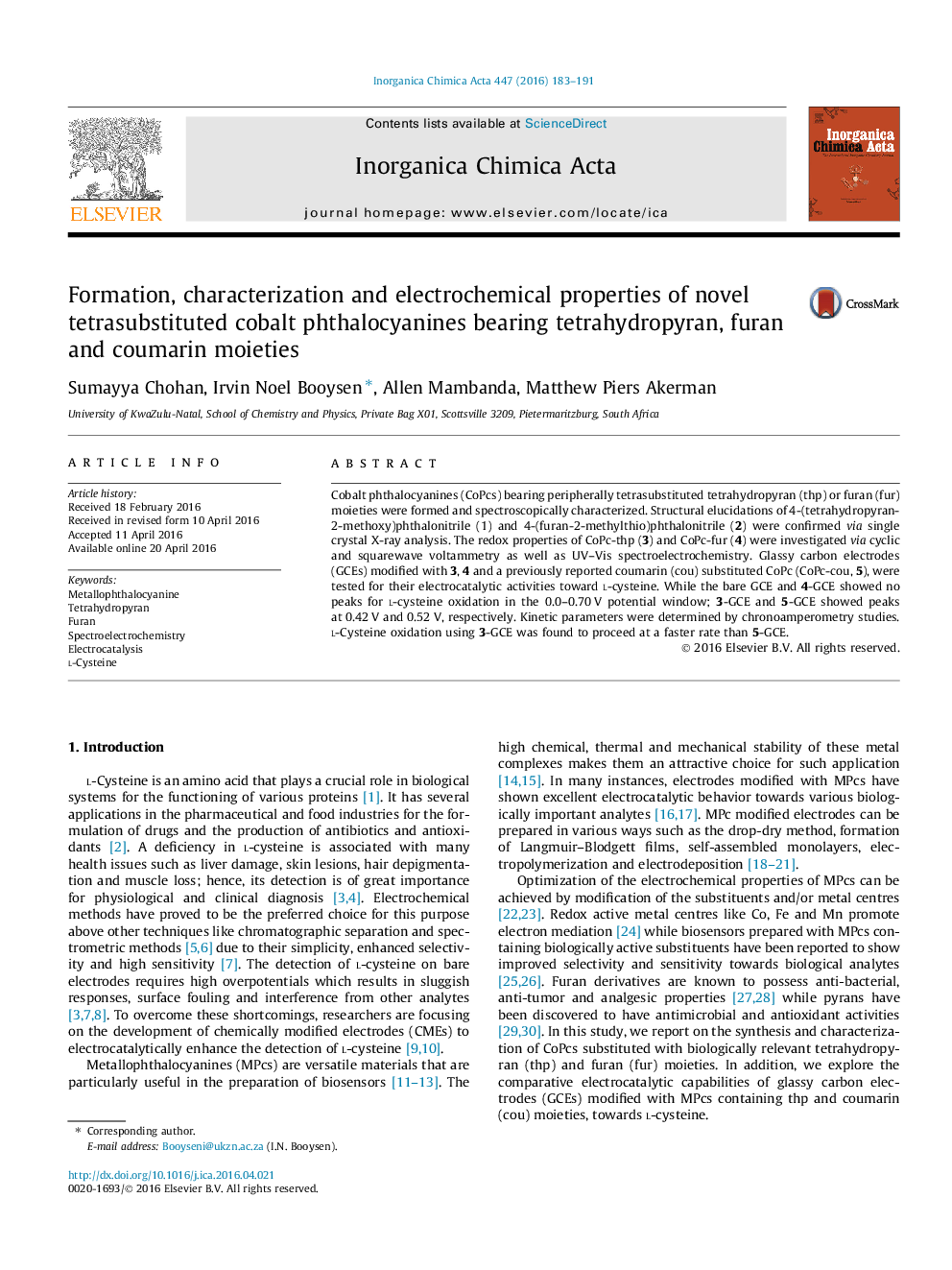| Article ID | Journal | Published Year | Pages | File Type |
|---|---|---|---|---|
| 1307495 | Inorganica Chimica Acta | 2016 | 9 Pages |
•Isolation of novel tetrasubstituted CoPcs, viz. CoPc-thp (3) and CoPc-fur (4).•Modification of glassy carbon electrodes (GCEs) using CoPcs via drop-dry method.•Bare GCE and 4-GCE showed no peaks for l-cysteine oxidation.•3-GCE and (CoPc-cou, 5)-GCE showed electrocatalytic activities toward l-cysteine.•Electrocatalytic rate constants are higher than previously reported studies.
Cobalt phthalocyanines (CoPcs) bearing peripherally tetrasubstituted tetrahydropyran (thp) or furan (fur) moieties were formed and spectroscopically characterized. Structural elucidations of 4-(tetrahydropyran-2-methoxy)phthalonitrile (1) and 4-(furan-2-methylthio)phthalonitrile (2) were confirmed via single crystal X-ray analysis. The redox properties of CoPc-thp (3) and CoPc-fur (4) were investigated via cyclic and squarewave voltammetry as well as UV–Vis spectroelectrochemistry. Glassy carbon electrodes (GCEs) modified with 3, 4 and a previously reported coumarin (cou) substituted CoPc (CoPc-cou, 5), were tested for their electrocatalytic activities toward l-cysteine. While the bare GCE and 4-GCE showed no peaks for l-cysteine oxidation in the 0.0–0.70 V potential window; 3-GCE and 5-GCE showed peaks at 0.42 V and 0.52 V, respectively. Kinetic parameters were determined by chronoamperometry studies. l-Cysteine oxidation using 3-GCE was found to proceed at a faster rate than 5-GCE.
Graphical abstractGlassy carbon electrodes (GCEs) were modified with CoPcs containing tetrahydropyran (3), furan (4) or coumarin (5) moieties. The bare GCE and 4-GCE showed no peaks for l-cysteine oxidation in the 0.0–0.70 V potential window while 3-GCE and 5-GCE showed peaks at 0.42 V and 0.52 V, respectively.Figure optionsDownload full-size imageDownload as PowerPoint slide
